When I was a little girl, I spent summers in the country and a lot of time with my great-grandparents. One of my jobs was to keep fresh flowers by my Grammy’s bedside table. She had a number of beautiful bloomers growing in her garden, but what I remember most is the tangle of rainbow-colored sweet peas climbing up her carport posts.
When we bought our first house, the very first thing I planted was a huge tunnel of sweet peas right in the center of the garden. That spring, as the first flowers opened, their scent transported me back in time to the summers of my youth and the happy memories of picking flowers in Grammy’s garden.
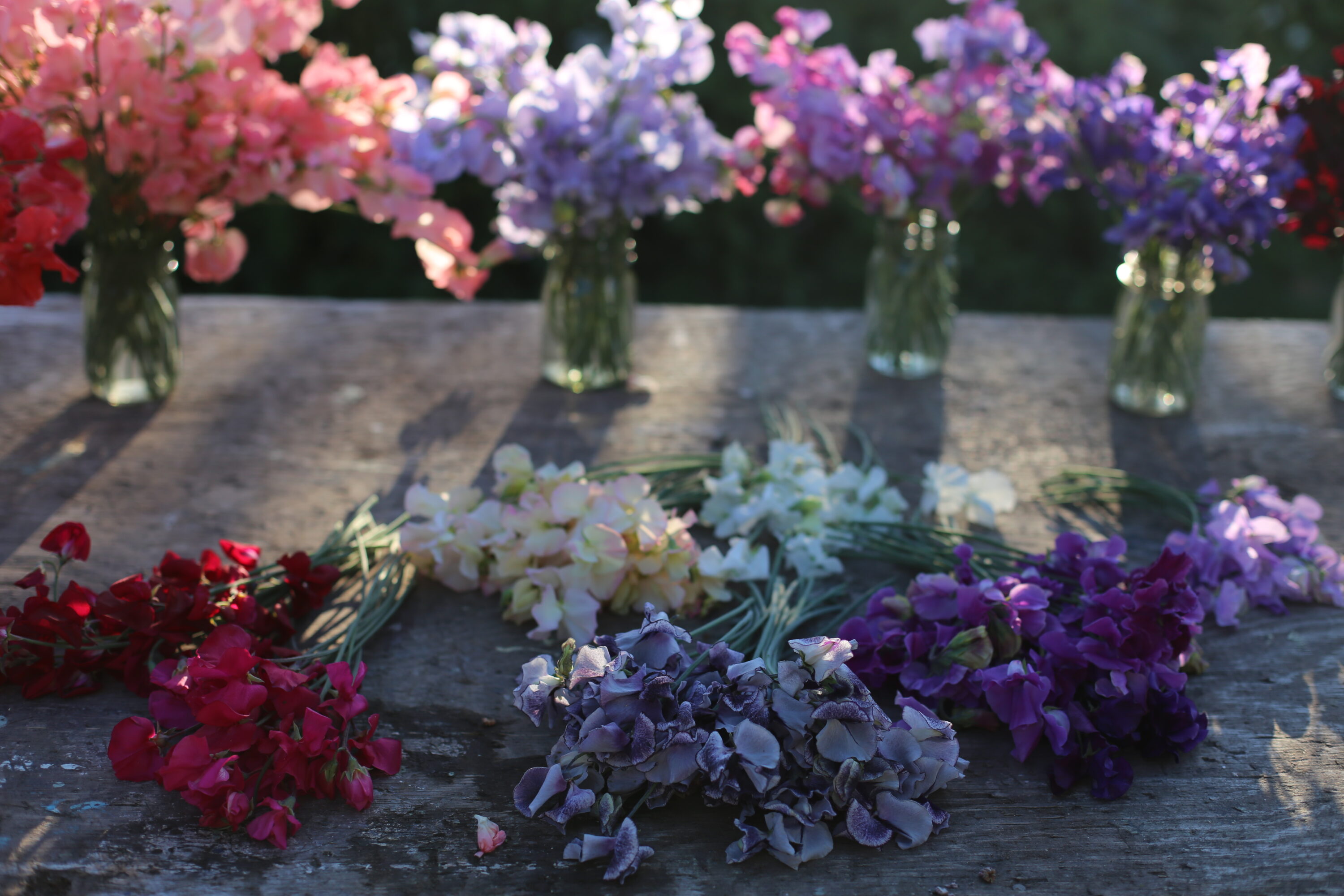
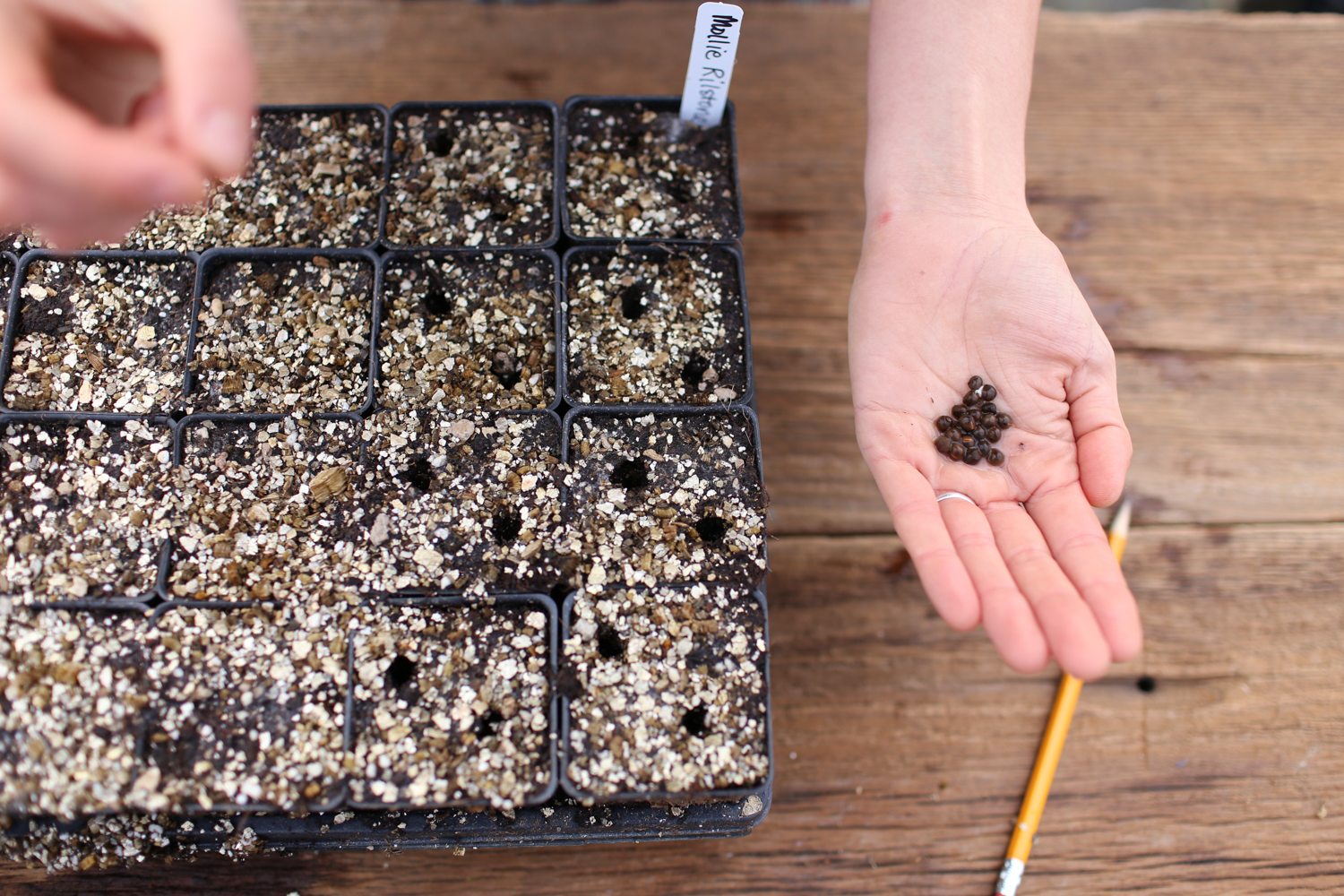
Soak the seeds in water for 24 hours before sowing. This softens the seed coat and speeds up the sprouting process. For detailed seed-sowing information, see our resource How to Grow Sweet Peas.
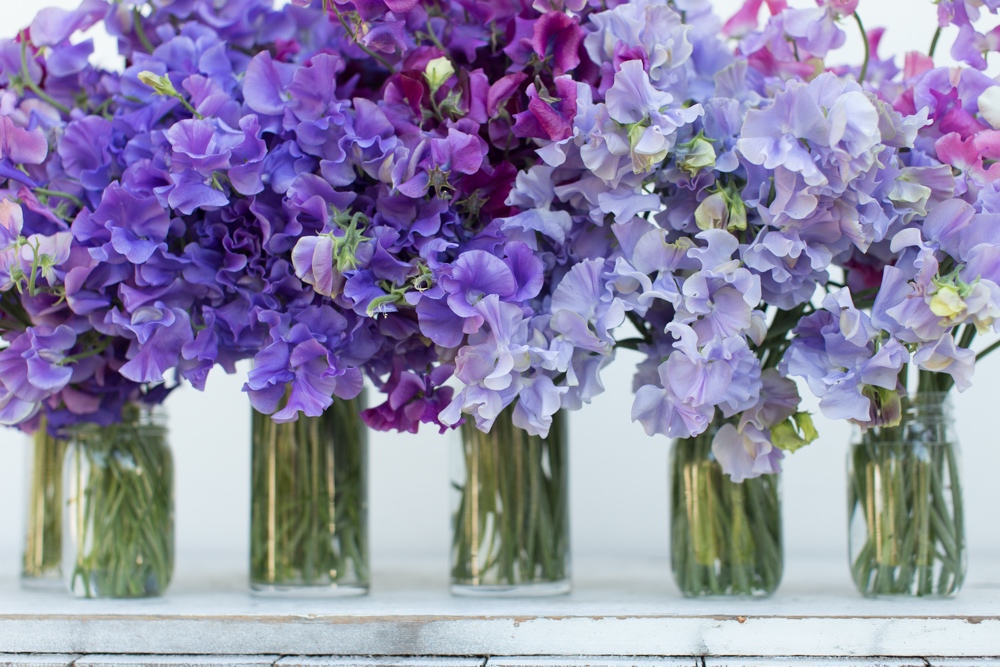
For the longest vase life, pick stems that have at least 2 unopened flowers at the tip. While they can be picked when more open, their vase life won’t be quite as long. Sweet peas are a short-lived cut flower, lasting at best 4 to 5 days in a vase. Adding sugar or flower preservative to the water makes a big difference and will add a few extra days.
Please note that unlike garden peas, sweet pea seeds are poisonous if ingested. Use caution around children and pets.
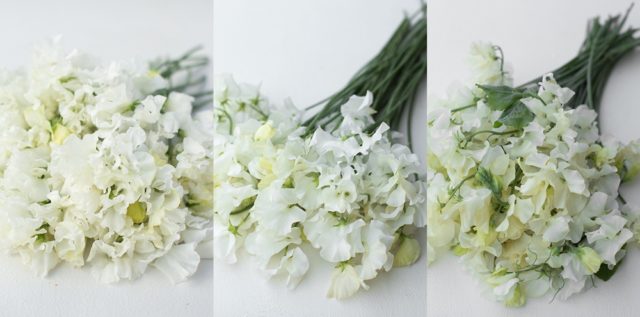
One of the most fragrant whites we grow, ‘Memorial Flight’ (pictured above, left) boasts large, ruffled creamy-white flowers with a green undertone. It’s great for wedding work.
A reliable performer and one of the very best whites you can grow, ‘White Frills’ (above, center) has thick, robust foliage and a strong growth habit. Large, clean white flowers are ruffled and especially fragrant. It’s a true garden workhorse!
Winner of numerous awards for good reason, ‘Jilly’ (above, right) is a lovely shade of soft cream and is one of the finest varieties available. Long, strong stems and a wonderful fragrance make it an excellent cut flower.
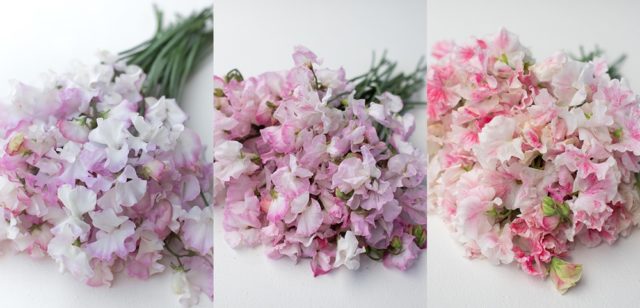
‘Anniversary’ (pictured above, left) has romantic, fragrant white blooms softly edged with blush-pink on tall, strong stems.
‘High Society’ (above, center) has a lovely feminine quality and is one of the most fragrant varieties we grow. Creamy flowers are edged in a warm candy pink. It’s great for wedding work.
‘Pearl Anniversary’ (above, right) features creamy white petals with cerise-pink streaking. It’s fantastic for wedding work.
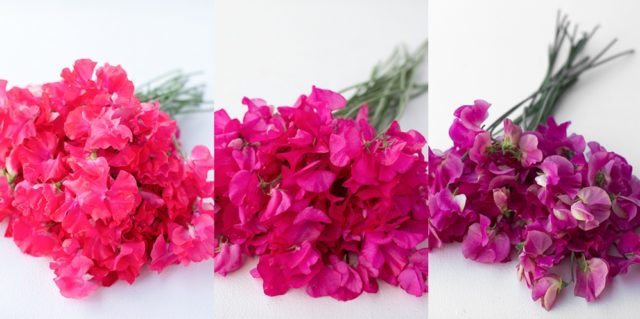
‘Daily Mail’ (pictured above, left) is a showstopper featuring large, bright cerise-pink blooms that ride atop long, strong stems. It’s great for cutting.
‘Carlotta’ (above, center) is a beautiful, old-fashioned variety that has stood the test of time. Its saturated carmine-pink blooms stand out in the garden and the vase. Long stems and a strong fragrance make it a real winner.
‘Dynasty’ (above, right) is a reliable grower and an all-around wonderful cut flower, featuring vivid, hot pink blooms on long, strong stems. Paler top buds have a cream underside, giving them a multidimensional quality. A total winner!
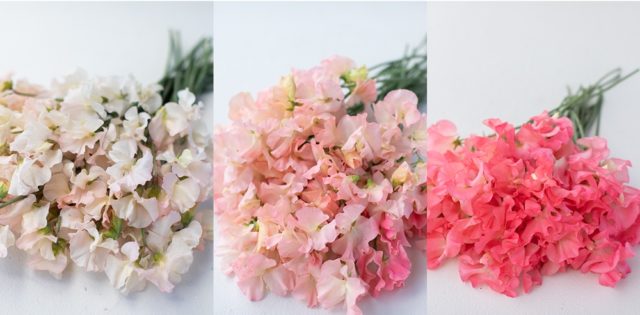
‘Piggy Sue’ (pictured above, left), a new favorite, has spectacular coloring and glows in the garden. Highly scented, cream-colored petals are gently edged in blush, giving it a vintage, romantic feel.
Another new favorite, ‘Castlewellan’ (above, center) is a long-stemmed, sweetly scented beauty that boasts large, glowing peachy-pink blooms with creamy undertones. Its soft appearance makes it great for wedding design. A must-grow!
‘Marjorie Carrier’ (above, right) boasts the most beautiful large, frilly salmon-pink blooms on long, strong stems. Its spectacular coloring and lovely scent make it a flower arranger’s dream.
‘Bix’ (pictured above, left), a new variety bred by Dr. Keith Hammett, has vintage charm. Blooms are cream colored, brushed with apricot-pink, and it’s one of the earliest varieties to flower. Tall, abundant stems have an average of 5 blooms. It’s a great option for wedding bouquets.
The large, creamy, ruffled blooms of ‘Jill Walton’ (above, center) have the softest peachy-pink blush around the outer edge, giving them an ultra-feminine quality. This is one of our top five favorite varieties.
One of our very favorites on the farm, ‘Mollie Rilstone’ (above, right) is a sure bet. Very fragrant, cream-colored blooms are edged with the softest apricot-pink. Flowers fade to a pure cream, giving this variety an antique, Victorian quality. It is extremely popular for weddings.
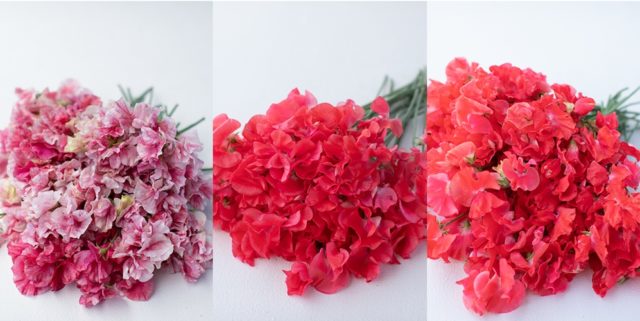
‘Geoff Hughes’ (pictured above, left) is one of our all-time favorite varieties. This large-flowered sweet pea has cream blooms with coral streaking. It flowers abundantly and is great for cutting.
‘Edith Flanagan’ (above, center) is a stunning new variety raised by Andrew Beane. It boasts large coral blossoms on long, strong stems. Its fantastic scent and eye-catching coloring make it a real winner.
‘Florencecourt’ (above, right) is a sweetly scented variety featuring large, glowing coral flowers that fade to white in the center, giving them a multidimensional quality.
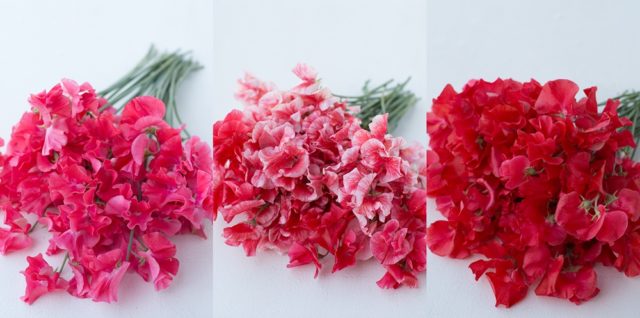
‘Raspberry Flake’ (above, center) is a fitting name for this attention-getting variety. Cream-colored flowers are painted with deep, almost metallic raspberry streaking. Flowers have varying levels of saturation, so no two are the same.
The cheerful blooms of ‘Restormel’ (above, right) practically glow in the dark. Warm coral-red flowers almost look artificial and remind us of maraschino cherries. This fragrant variety is one of our all-time favorites. A must-grow!
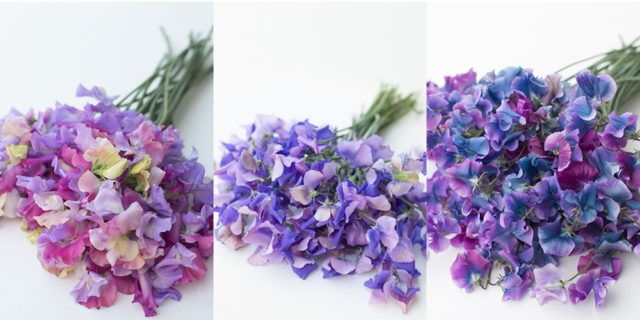
‘Enchante’ (pictured above, left) is an amazing tricolor variety, a brilliant blend of cherry pink, white, and lavender bred by Dr. Keith Hammett. It’s lovingly nicknamed the “unicorn sweet pea” at Floret. It is truly exquisite and ranks high on our must-grow list.
An all-time favorite, ‘Erewhon’ (above, center) is a hauntingly beautiful reverse bicolor with dark lavender-blue and soft pink standard petals. Great for cutting, it boasts tall, strong stems. A must-grow!
‘Blue Shift’ (above, right), bred by Dr. Keith Hammett, is an incredible bloomer that goes from mauve-pink to an iridescent blue-turquoise as it ages. It’s like nothing else on the market.
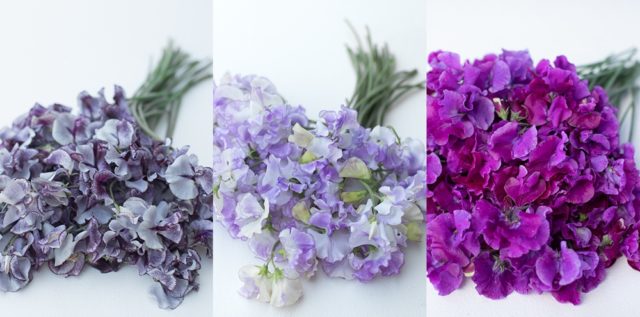
White blooms striped with vivid lilac make ‘Sir Jimmy Shand’ (above, center), a novelty variety, a new favorite. It has tall stems and a wonderful fragrance and makes an excellent cut flower.
‘Richard & Judy’ (above, right), a long-stemmed, super-fragrant variety, is a must-grow if you love purple. Warm, grape-colored flowers are multidimensional and seem to glow in the garden. This is a standout variety in the sweet pea patch!
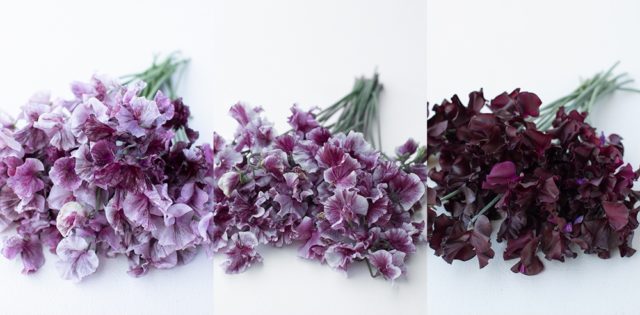
‘Suzy Z’ (pictured above, left), a must-grow for the color alone, has a striking metallic gray base with deep maroon veining. This variety is similar in appearance to the ever-popular ‘Nimbus’ but more chocolate-maroon in color.
‘Chocolate Flake’ (above, center), bred by Dr. Keith Hammett, is a unique brown-red flaked variety that looks as if it has been dusted with cocoa powder.
Stunning in the garden, ‘Windsor’ (above, right) is a richly hued beauty with warm, chocolaty-maroon blooms that make a real statement. Flowers are quite fragrant and ride atop long, strong stems, making it a fantastic variety for cutting.
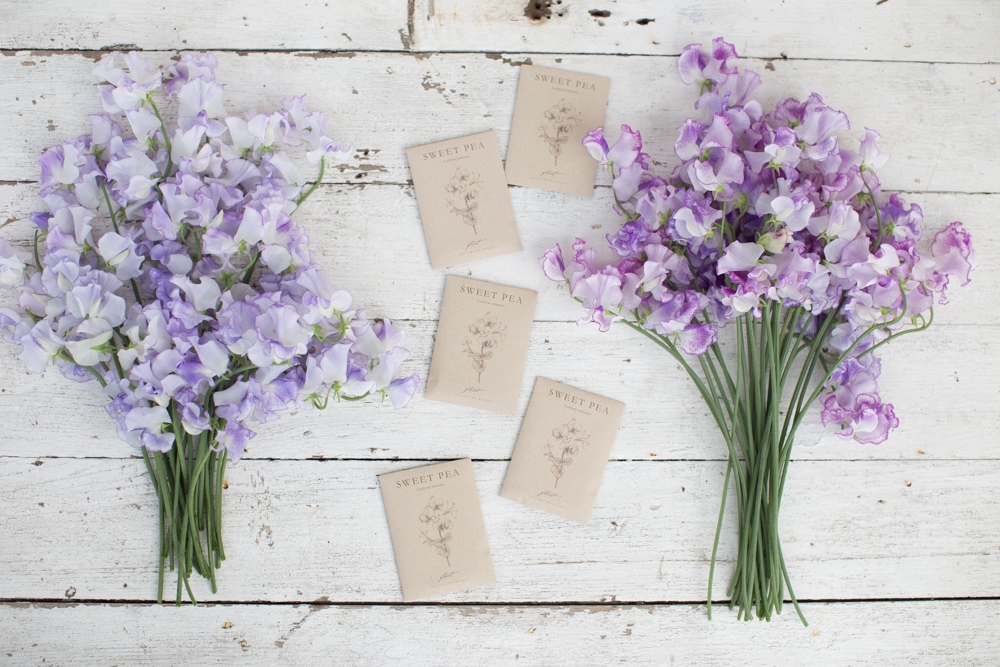
Please note: If your comment doesn’t show up right away, sit tight; we have a spam filter that requires us to approve comments before they are published.
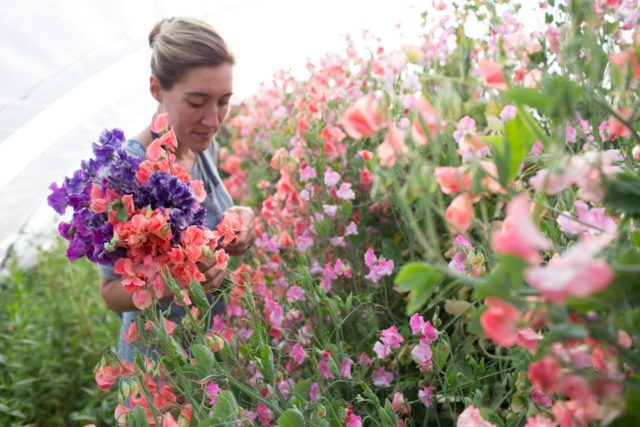
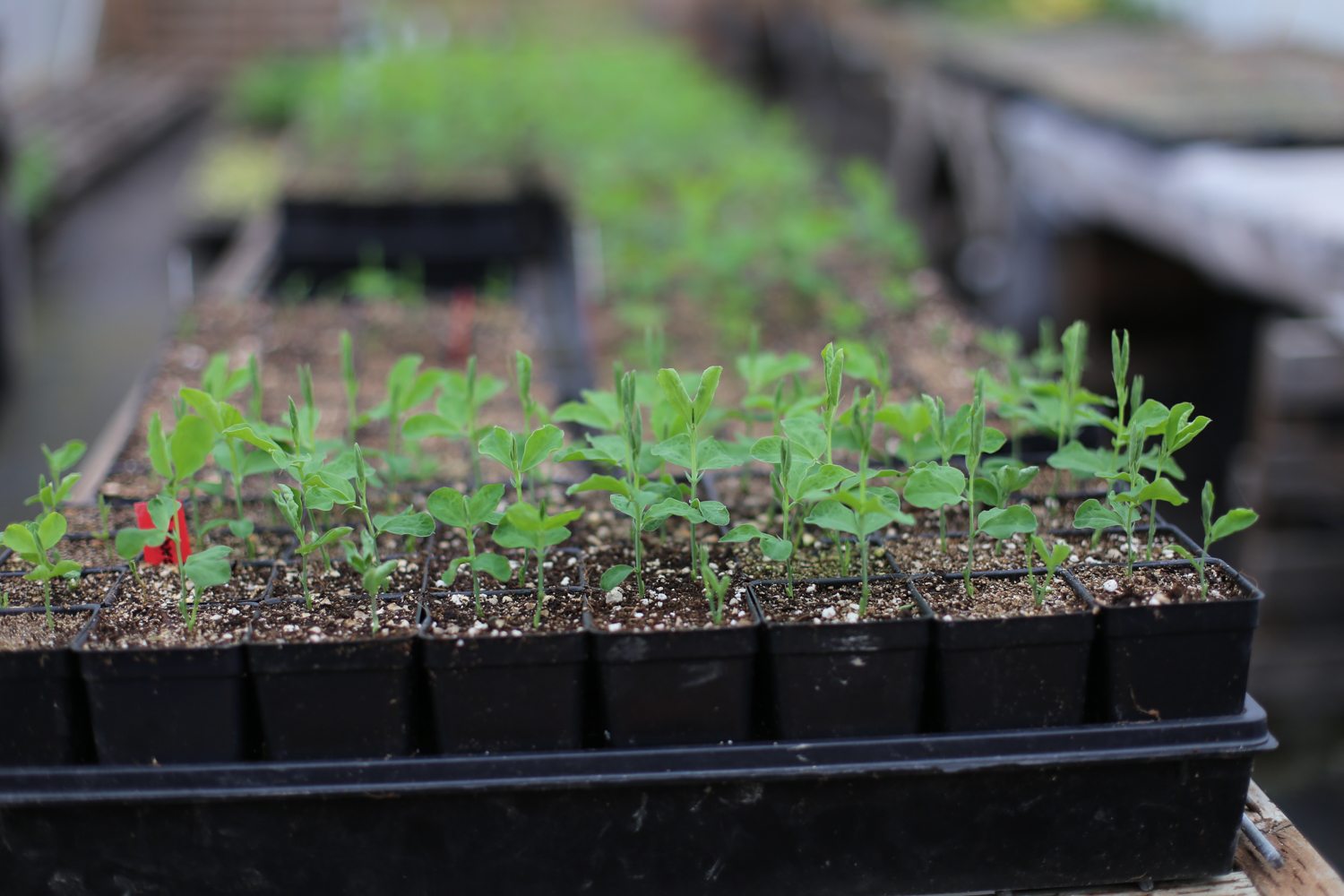
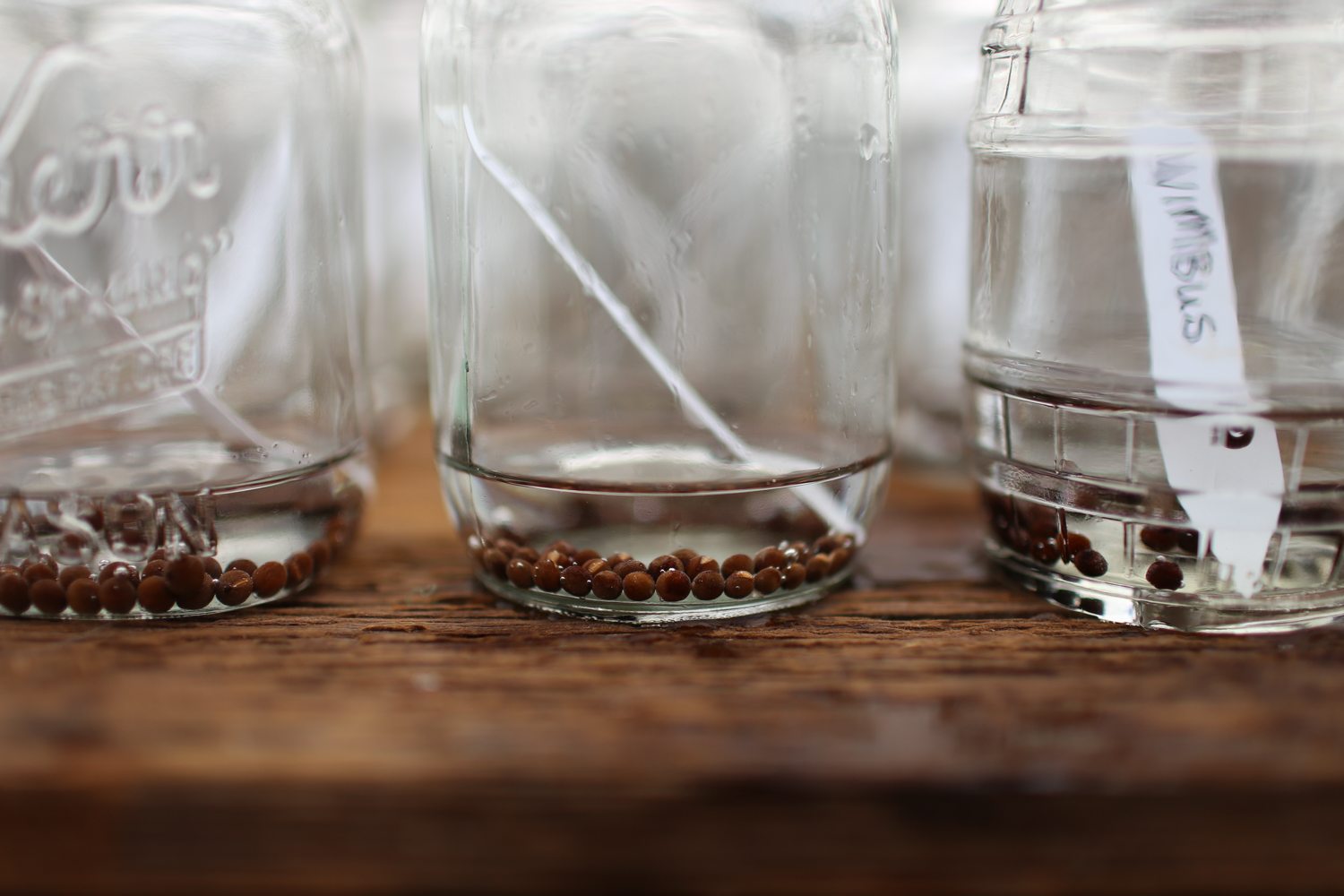
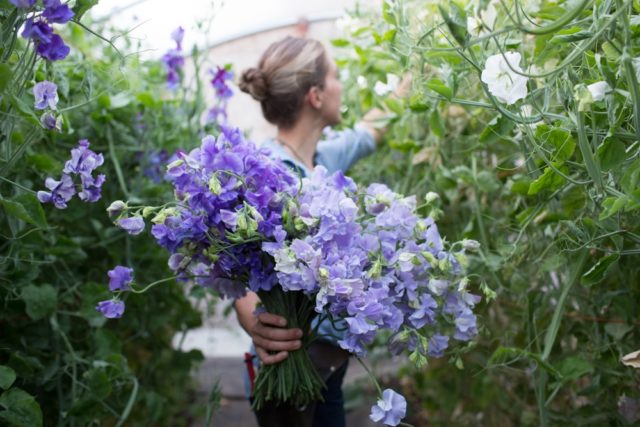
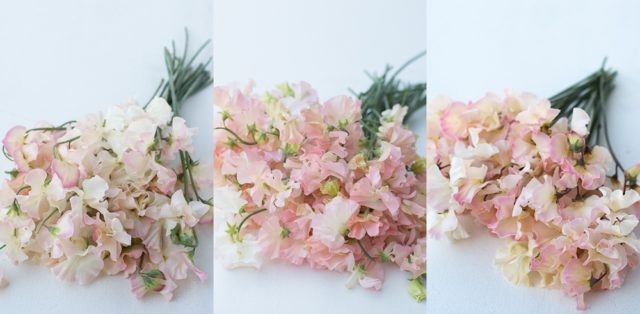
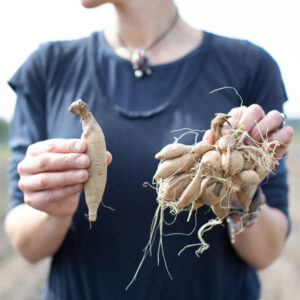

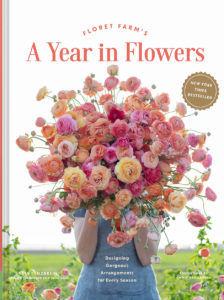
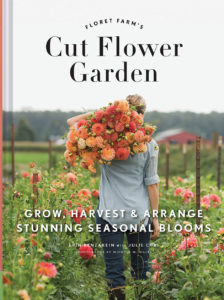


Zari on
Grew a mix of sweet peas in a raised garden bed at an after school program I used to work at. When our art director was hospitalized, a couple of us cut a bouquet of sweet peas for him. I swear the scent trail made the nurses follow us from the lobby, into the elevator and into his room. They thought it was a perfume one of us was wearing and wanted to know the name of it. Ha!